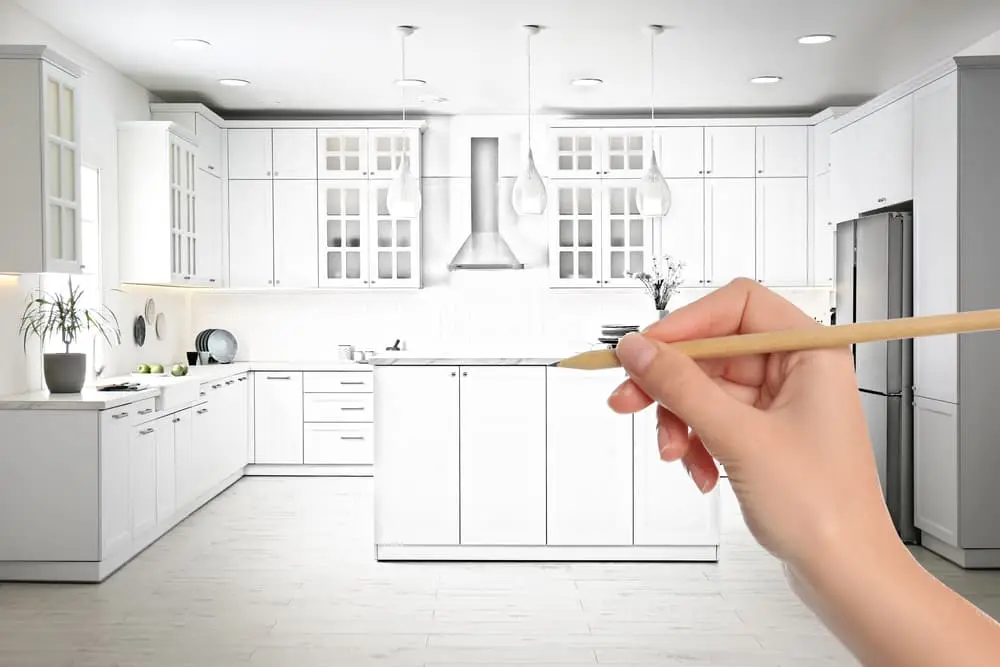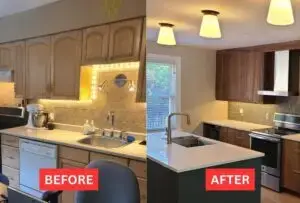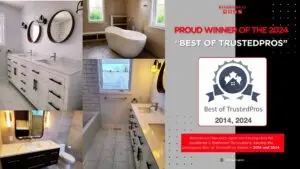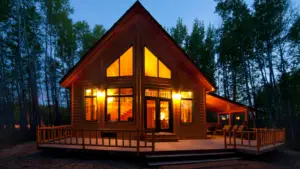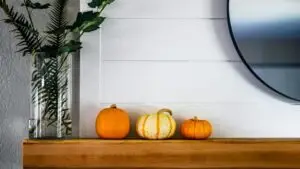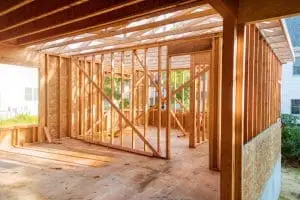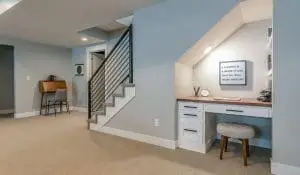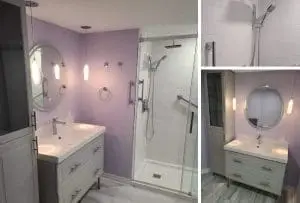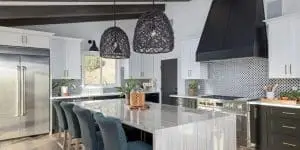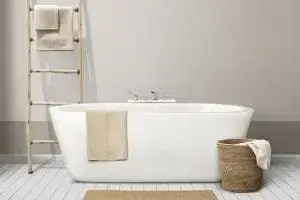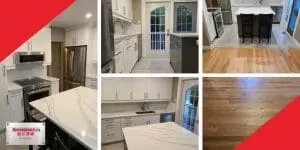Is the kitchen stuck in the past? Do you want a space that represents your style and makes cooking enjoyable? This blog post, based on the insightful guide “Designing Dreams: Crafting Your Perfect Kitchen Renovation Plan,” will provide you with the tools you need to turn your kitchen ideas into a beautiful reality.
Envisioning Your Ideal Kitchen: Needs, Cooking Habits, and Desired Look
It’s time to get serious about your dream kitchen. Before we get too caught up with beautiful photographs and fancy finishes, let’s take a step back and genuinely understand your needs for this area. This planning stage is critical for building a kitchen that is not only attractive but also functional for your lifestyle and cooking habits.
Assess Your Kitchen Needs:
 Budgeting for Success: Designing Your Dream Kitchen Within Your Means
So you’ve imagined your ideal kitchen, a room that reflects your wants and cooking preferences. The next step is to create a realistic financial strategy to turn that desire into a reality. Kitchen renovations can be costly, so it is critical to have a clear budget from the start. Here’s how to navigate the financial waters and keep your dream kitchen from becoming a fiscal nightmare.
Know Your Numbers:
Budgeting for Success: Designing Your Dream Kitchen Within Your Means
So you’ve imagined your ideal kitchen, a room that reflects your wants and cooking preferences. The next step is to create a realistic financial strategy to turn that desire into a reality. Kitchen renovations can be costly, so it is critical to have a clear budget from the start. Here’s how to navigate the financial waters and keep your dream kitchen from becoming a fiscal nightmare.
Know Your Numbers:
 Optimizing Your Layout: Unlocking Your Kitchen’s Potential through Smart Design
Now that you’ve imagined your ideal kitchen and set a budget, it’s time to turn those plans into a useful and beautiful area. Layout optimization is the art of maximizing your space to produce a kitchen that not only looks great but also promotes a smooth and efficient operation.
Understand Design Principles:
Optimizing Your Layout: Unlocking Your Kitchen’s Potential through Smart Design
Now that you’ve imagined your ideal kitchen and set a budget, it’s time to turn those plans into a useful and beautiful area. Layout optimization is the art of maximizing your space to produce a kitchen that not only looks great but also promotes a smooth and efficient operation.
Understand Design Principles:
 Cabinetry: The Heart of Your Kitchen—Style and Material Symphony for Your Dream Space.
Your fantasy kitchen is taking shape! You’ve planned the layout and picked the appliances; now it’s time to concentrate on the part that actually defines your cooking space: the cabinets. Cabinets not only provide necessary storage, but they also greatly influence the overall look and functioning of your kitchen. Here’s how to navigate the exciting world of cabinets and find the ideal balance of design and material for your dream home.
Find Your Style Symphony:
Cabinetry: The Heart of Your Kitchen—Style and Material Symphony for Your Dream Space.
Your fantasy kitchen is taking shape! You’ve planned the layout and picked the appliances; now it’s time to concentrate on the part that actually defines your cooking space: the cabinets. Cabinets not only provide necessary storage, but they also greatly influence the overall look and functioning of your kitchen. Here’s how to navigate the exciting world of cabinets and find the ideal balance of design and material for your dream home.
Find Your Style Symphony:
 Choosing Countertops and Backsplashes: The Ideal Finishing Touch for Your Dream Kitchen
The path to your dream kitchen is almost complete! You’ve planned the layout, picked the appliances and cabinetry, and now it’s time to focus on the surfaces that will make your room more appealing and functional: countertops and backsplashes. These features add the right finishing touch, representing your style and individuality while being durable and functional.
Countertop Canvas:
Choosing Countertops and Backsplashes: The Ideal Finishing Touch for Your Dream Kitchen
The path to your dream kitchen is almost complete! You’ve planned the layout, picked the appliances and cabinetry, and now it’s time to focus on the surfaces that will make your room more appealing and functional: countertops and backsplashes. These features add the right finishing touch, representing your style and individuality while being durable and functional.
Countertop Canvas:
 Navigating the Renovation Process: Demystifying Your Kitchen Journey with Valuable Tips
So you’ve methodically planned your dream kitchen, and it’s time to make it a reality. The renovation procedure may appear difficult, but do not worry! With the correct knowledge and a smart approach, you may confidently embark on this exciting path. Here are some useful suggestions and insights to help you with your kitchen renovation:
Form your dream team:
Navigating the Renovation Process: Demystifying Your Kitchen Journey with Valuable Tips
So you’ve methodically planned your dream kitchen, and it’s time to make it a reality. The renovation procedure may appear difficult, but do not worry! With the correct knowledge and a smart approach, you may confidently embark on this exciting path. Here are some useful suggestions and insights to help you with your kitchen renovation:
Form your dream team:
- Cooking Frequency: Do you prepare complex meals every night, or do you primarily utilize the kitchen for short breakfasts and social occasions? Knowing how frequently you’ll use the room will affect its functionality.
- Do you cook with a family or on your own? Consider how many people will be using the kitchen at once and how much space they will require to move around comfortably.
- Determine your storage requirements. Do you need a large pantry to store big items, or would well-organized cabinets suffice?
- Culinary Focus: Do you enjoy exploring with international cuisines or prefer comfort foods? Your cooking preferences can impact appliance selection and layout decisions.
- Preparation Style: Do you appreciate prepping items ahead of time or prefer quick, one-pot meals? This will influence the type of counter space and appliances that you prioritize.
- Delegation Level: Do you prefer preparing ingredients yourself or assign responsibilities to others? This can help establish how much devoted prep area you need.
- Consider the overall style you want for your kitchen. Do you want a sleek, modern style with cutting-edge materials, or do you prefer a cozy, timeless atmosphere?
- Ambiance: Set the desired mood. Do you envisage a bright environment with large windows or a cozy setting with warm lighting and rich colors?
- Design preferences: Think about your personal style. Do you want a kitchen that makes a dramatic statement or one that emphasizes clean lines and a clutter-free appearance?
 Budgeting for Success: Designing Your Dream Kitchen Within Your Means
So you’ve imagined your ideal kitchen, a room that reflects your wants and cooking preferences. The next step is to create a realistic financial strategy to turn that desire into a reality. Kitchen renovations can be costly, so it is critical to have a clear budget from the start. Here’s how to navigate the financial waters and keep your dream kitchen from becoming a fiscal nightmare.
Know Your Numbers:
Budgeting for Success: Designing Your Dream Kitchen Within Your Means
So you’ve imagined your ideal kitchen, a room that reflects your wants and cooking preferences. The next step is to create a realistic financial strategy to turn that desire into a reality. Kitchen renovations can be costly, so it is critical to have a clear budget from the start. Here’s how to navigate the financial waters and keep your dream kitchen from becoming a fiscal nightmare.
Know Your Numbers:
- Before plunging in, assess your current financial situation. Examine your income, expenses, and current savings.
- Project scope: Determine the scale of your renovation. Are you considering a total redesign or a more targeted refresh? A realistic grasp of the project’s scope can assist you in developing an appropriate budget.
- Determine the average cost of kitchen remodeling in your area. This includes materials, labor, permits, and any unforeseen costs. Online resources, contractor consultations, and estimates from local suppliers can provide useful information.
- Allocate 5-15% of your home’s value for renovations, as a rough guideline. This is a starting point; changes may be required depending on your financial status and project scope.
- Prioritize and allocate: Divide your budget into areas such as cabinetry, appliances, countertops, flooring, and labor. Allocate a set budget to each category, focusing on the elements that are most important to your dream kitchen.
- Establish a budget for renovations. This will set the timeline for your project and may influence financing alternatives.
- Consider home equity loans or credit cards as responsible financing options to bridge the financial gap.
- Set aside 15-20% of your budget for a contingency fund to prepare for unexpected events. Unexpected complications, such as concealed plumbing problems or electrical improvements, may develop during renovation.
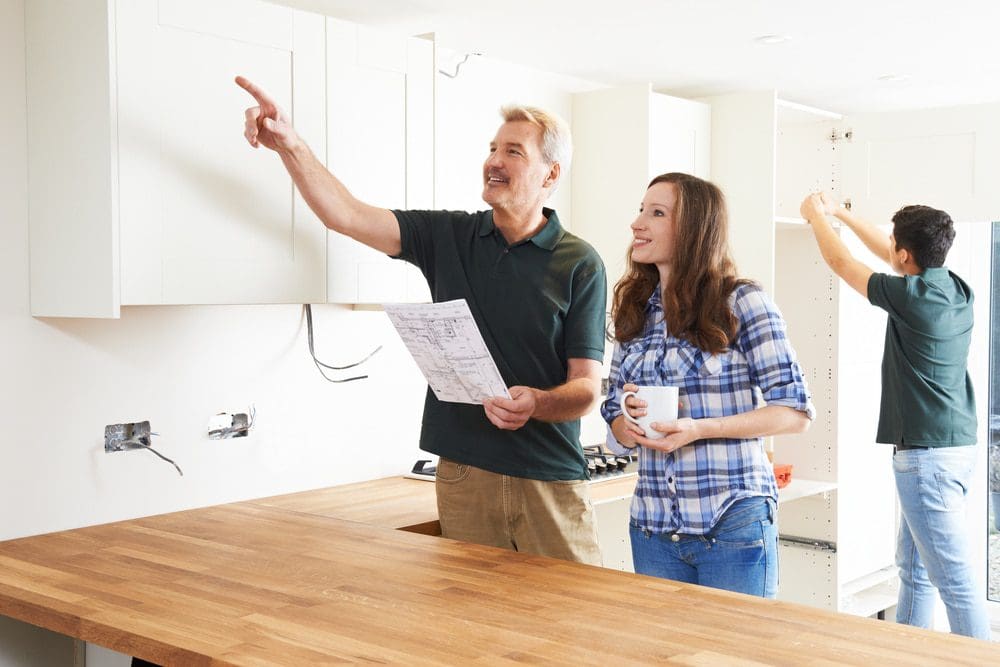 Optimizing Your Layout: Unlocking Your Kitchen’s Potential through Smart Design
Now that you’ve imagined your ideal kitchen and set a budget, it’s time to turn those plans into a useful and beautiful area. Layout optimization is the art of maximizing your space to produce a kitchen that not only looks great but also promotes a smooth and efficient operation.
Understand Design Principles:
Optimizing Your Layout: Unlocking Your Kitchen’s Potential through Smart Design
Now that you’ve imagined your ideal kitchen and set a budget, it’s time to turn those plans into a useful and beautiful area. Layout optimization is the art of maximizing your space to produce a kitchen that not only looks great but also promotes a smooth and efficient operation.
Understand Design Principles:
- The Work Triangle idea recommends aligning the refrigerator, sink, and stove in a triangle shape. Aim for a comfortable distance between these crucial zones to reduce unnecessary steps during cooking.
- Consider the natural flow of movement in your kitchen. People should not have to continuously avoid each other. Make clear paths for simple mobility and prevent generating bottlenecks.
- Organize your kitchen into task zones for food storage, preparation, cooking, cleaning, and serving. This fosters logical workflow and increases efficiency.
- Measure twice, cut once: Before planning your kitchen arrangement, take precise measurements. Include entrances, windows, and any existing fittings. Accurate dimensions are critical for designing a practical layout.
- Utilize software solutions, such as online kitchen design tools and mobile apps, to visualize layout possibilities for your area.
- Experiment with unorthodox configurations to better fit your space. Depending on your needs and tastes, you can choose galley kitchens, L-shaped layouts, or even open-concept designs that combine with living rooms.
- Position appliances strategically for optimal workflow. For example, place the dishwasher near the sink for easy cleanup.
- Maximize storage using creative solutions such as pull-out drawers, corner cabinets, and space-saving shelves. Tall cabinets make good use of vertical space, as do pot racks and hanging organizers.
- Countertop considerations: Choose countertop materials that match your cooking style and budget. Consider the amount of counter space required for preparation and appliance placement.
- Match your needs: Don’t get carried away with flashy features. Consider your cooking preferences and choose appliances that complement your culinary approach. A dedicated baker may choose a high-end oven, whereas a busy family may prefer a powerful blender for rapid smoothies.
- Prioritize Efficiency: Choose appliances with energy-saving features such as star ratings or certifications. This results into long-term savings on utility bills.
- Choose appliances with appropriate capacity to meet your needs. A large family may need a larger refrigerator, whilst a single person may prefer a more compact type.
- Prioritize beauty alongside practicality. Consider the overall decor of your kitchen and select appliances that complement your aesthetic – sleek stainless steel for a current look or classic white for a timeless vibe.
- Consider how the appliances will interact with your cabinetry. Built-in ovens and microwaves can provide a clean design, although freestanding appliances can offer personality.
- Optimize your cooking experience by selecting equipment with high-performance features. Induction cooktops provide exact temperature control, whilst convection ovens assure uniform heat distribution.
- Think Like a Chef: Add specialty gadgets that represent your culinary interests. A pasta machine can be a game changer for Italian food enthusiasts, whereas a steam oven is a health-conscious foodie’s dream.
- Small Appliance Stars: Do not underestimate the power of little appliances! A good blender, food processor, or coffee maker can greatly improve your daily meals and mornings.
- Smart choices: Discover smart appliances that work with your smart home system. Imagine preheating the oven remotely or checking to see if the fridge door is closed with your smartphone!
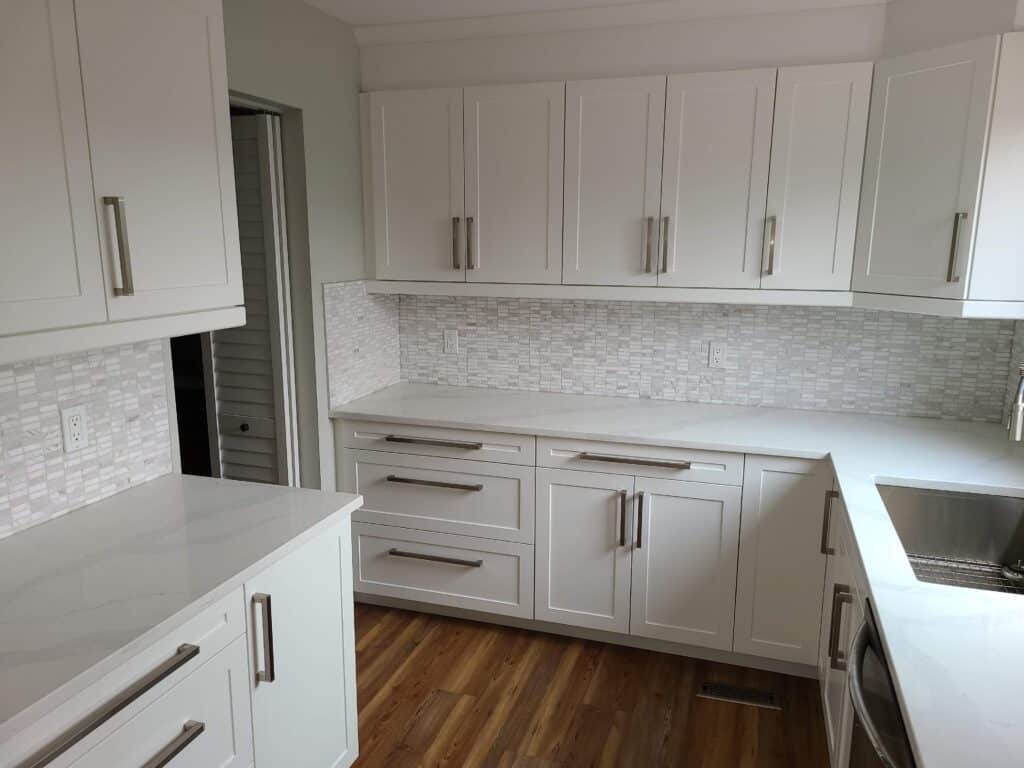 Cabinetry: The Heart of Your Kitchen—Style and Material Symphony for Your Dream Space.
Your fantasy kitchen is taking shape! You’ve planned the layout and picked the appliances; now it’s time to concentrate on the part that actually defines your cooking space: the cabinets. Cabinets not only provide necessary storage, but they also greatly influence the overall look and functioning of your kitchen. Here’s how to navigate the exciting world of cabinets and find the ideal balance of design and material for your dream home.
Find Your Style Symphony:
Cabinetry: The Heart of Your Kitchen—Style and Material Symphony for Your Dream Space.
Your fantasy kitchen is taking shape! You’ve planned the layout and picked the appliances; now it’s time to concentrate on the part that actually defines your cooking space: the cabinets. Cabinets not only provide necessary storage, but they also greatly influence the overall look and functioning of your kitchen. Here’s how to navigate the exciting world of cabinets and find the ideal balance of design and material for your dream home.
Find Your Style Symphony:
- Classic charm or modern marvel? Consider your preferred kitchen aesthetic. Do you want timeless elegance with shaker-style doors and warm wood tones? Or do you want a sleek, modern style with flat-panel cabinetry and prominent hardware?
- Consider the functional influence of cabinet doors while designing them. Shaker-style doors have a classic appearance and can hide fingerprints well, but flat-panel doors give a clean, modern feel but may show smudges more easily.
- Personalize your palette. Don’t be afraid to experiment with colors! While conventional white and wood tones are still fashionable, consider brighter colors like navy blue or deep green for a standout piece. Consider two-tone cabinets for more visual appeal.
- Solid wood: Solid wood cabinets are the epitome of elegance and durability, with timeless beauty that may be tailored to a completely distinctive style. However, they are more expensive and require more maintenance.
- Engineered wood: Engineered wood cabinets, such as plywood or MDF, are a low-cost and versatile solution that offers outstanding durability and is available in a variety of forms and colors. They are also less likely to distort than solid wood.
- Thermofoil and laminate are cost-effective solutions for achieving a modern look. They come in a wide range of colors and finishes, are simple to clean, and withstand dampness well. However, they may not be as durable as solid or engineered wood. Optimizing Functionality:
- Storage solutions: Beyond traditional cabinets, consider ingenious storage solutions such as pull-out drawers, corner cabinets with novel mechanics, and built-in organizers.
- Optimize storage space and workflow with intelligent cabinet configuration. Consider the location of drawers, shelves, and base cabinets based on your requirements.
- Harmony in hardware. Do not underestimate the power of cabinet hardware!
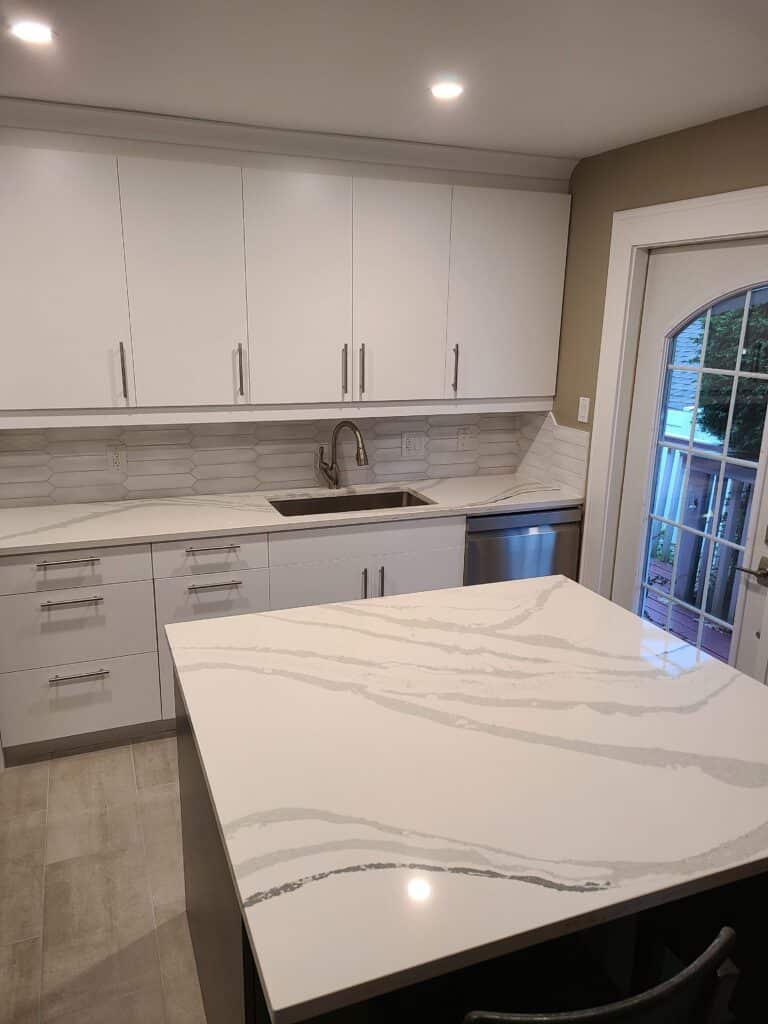 Choosing Countertops and Backsplashes: The Ideal Finishing Touch for Your Dream Kitchen
The path to your dream kitchen is almost complete! You’ve planned the layout, picked the appliances and cabinetry, and now it’s time to focus on the surfaces that will make your room more appealing and functional: countertops and backsplashes. These features add the right finishing touch, representing your style and individuality while being durable and functional.
Countertop Canvas:
Choosing Countertops and Backsplashes: The Ideal Finishing Touch for Your Dream Kitchen
The path to your dream kitchen is almost complete! You’ve planned the layout, picked the appliances and cabinetry, and now it’s time to focus on the surfaces that will make your room more appealing and functional: countertops and backsplashes. These features add the right finishing touch, representing your style and individuality while being durable and functional.
Countertop Canvas:
- Material Musings: Consider the advantages and disadvantages of various countertop materials. Popular options include granite (traditional beauty, durability), quartz (non-porous, low maintenance), butcher block (warmth, character, requires maintenance), and stainless steel (sleek, hygienic, prone to scratches).
- Match the countertop material to your kitchen’s overall look. Bold granite patterns can add drama, whereas clean quartz complements modern designs. Butcher block adds warmth to a rustic kitchen, while stainless steel has an industrial vibe.
- Functionality First, consider how you’ll use your counters. If you enjoy baking, select a heat-resistant surface such as quartz. Busy families may want a low-maintenance material like as quartz or laminate.
- Material Marvels: Discover a variety of backsplash materials, including ceramic tile (traditional, durable, and versatile), real stone (luxury, timeless beauty that demands upkeep), glass tile (contemporary, easy to clean), and even stainless steel for a sleek finish.
- Use Backsplashes to create individuality. Consider patterned tiles for a focal point, or keep it basic with subway tiles for a classic design. Mosaic tiles can be used to create a unique and eye-catching backsplash.
- Coordinating colors: Combine your backsplash, countertops, and cabinetry to create a unified look. You can go with a matching color scheme for a cohesive look or contrasting colors to create a dramatic statement.
- The Balancing Act: Strive for a balance of counters and backsplashes. If your worktops have a busy design, choose a simpler backsplash to prevent visual overload. A patterned backsplash, on the other hand, can make a simple countertop more interesting.
- Sample multiple times! Before making a final decision, order countertop and backsplash material samples. Consider how they will appear with your lighting and cabinets.
- Ambient lighting creates an atmosphere and illuminates the kitchen. Consider recessed lighting, pendant lights over islands, or strategically placed sconces to create a warm and inviting atmosphere.
- Optimal task lighting for meal preparation, cleaning, and recipe reading. Under-cabinet lighting, pendant lights above sink areas, and strip lighting beneath shelving can all greatly increase functionality.
- Use accent lighting to highlight specific items, such as artwork, a backsplash, or a cabinet. Consider spotlights, recessed fixtures with adjustable beams, or strategically positioned strip lighting.
- Warm or cool? Consider the general ambiance you wish to create. Warm light with a yellow or orange hue creates a pleasant and inviting ambiance, whereas cold light with a blue or white tint is great for task areas and increases alertness.
- Dimmers enable flexible illumination settings throughout the day. You can soften bright task lighting for meal preparation to create a more relaxing evening atmosphere.
- The importance of natural light Skylights and carefully placed windows can help maximize natural light. Natural light not only brightens the area, but it also helps to create a more pleasant and stimulating environment.
- Choose light fixtures that complement your kitchen design. Pendant lights can lend a modern touch, while sconces with classic finishes can improve a traditional look. Consider the fixtures’ material and finish to ensure they match your cabinetry and hardware.
- Prioritize functionality first. While aesthetics are important, prioritize usefulness. Task lighting should be bright enough to meet specific needs, while pendant lights should not hinder movement or cast shadows.
- Ceramic Tiles: Ceramic tile, a popular choice for kitchens, is extremely durable, water-resistant, and simple to maintain. It comes in a wide range of colors, patterns, and finishes, allowing you to create any look, from timeless elegance to current chic.
- Porcelain tile is resilient and dense, making it ideal for high-traffic areas. It also resists scratches, stains, and dampness. Porcelain tile is more expensive than ceramic tile, but it provides a larger range of genuine stone or wood characteristics.
- Luxury vinyl tiles (LVT): LVT is a low-cost solution that provides good durability and water resistance, and is available in a wide variety of forms that replicate natural materials such as wood or stone. LVT is pleasant underfoot and extremely simple to install, making it a favorite choice among DIYers. Some LVT types, however, may be less durable than others.
- Hardwood flooring lends classic elegance and warmth to kitchens. Over time, you can sand and polish them to bring out their inherent beauty. However, hardwood is prone to scratches, dents, and water damage. Natural stone, such as granite or slate, can provide a luxurious touch to a home but requires regular upkeep and may not be suitable for households with pets or dirty cooks. Stone is extremely durable and heat-resistant, but it can be costly and necessitates special cleaning methods. Natural stone might also feel cold underfoot.
- Linoleum: Linoleum, a sustainable and environmentally friendly alternative, is available in a variety of colors and designs. It’s soft underfoot, easy to clean, and naturally resistant to mold and mildew. However, linoleum is prone to cuts and dents, and some may find the patterns out of date.
- Sample multiple times! Order samples of various materials to see how they look under your kitchen lighting.
- Think long-term. Consider how the flooring will appear and perform over time, especially if you intend to reside in your house for many years.
- Don’t forget about upkeep! Research each material’s cleaning and maintenance requirements to ensure you’re ready for its care.
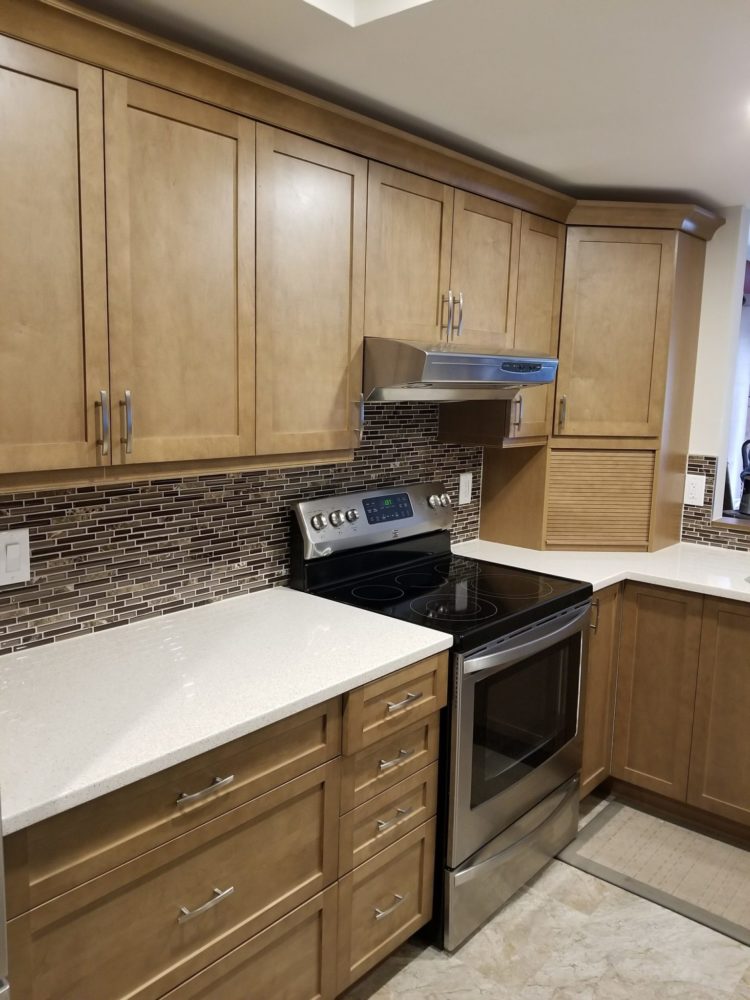 Navigating the Renovation Process: Demystifying Your Kitchen Journey with Valuable Tips
So you’ve methodically planned your dream kitchen, and it’s time to make it a reality. The renovation procedure may appear difficult, but do not worry! With the correct knowledge and a smart approach, you may confidently embark on this exciting path. Here are some useful suggestions and insights to help you with your kitchen renovation:
Form your dream team:
Navigating the Renovation Process: Demystifying Your Kitchen Journey with Valuable Tips
So you’ve methodically planned your dream kitchen, and it’s time to make it a reality. The renovation procedure may appear difficult, but do not worry! With the correct knowledge and a smart approach, you may confidently embark on this exciting path. Here are some useful suggestions and insights to help you with your kitchen renovation:
Form your dream team:
- Choosing the Best Contractor: Investigate and interview potential contractors. Look for licensed and insured professionals who have experience with kitchen improvements. Check references and internet reviews to get an idea of their reputation and job quality.
- The design duo: Consider consulting a kitchen designer or architect. They can transform your concept into technical designs, ensure maximum functionality, and assist you with material selection.
- Discuss the demolition plan with your contractor. Will it be a full-body renovation, or will you keep certain old elements? If your home is older, think about how to dispose of old items and whether you should test for lead paint.
- Permits and approvals: Look into any permissions required for your renovation job. Your contractor may be able to help with this process, but it is critical to understand the requirements to avoid delays.
- Expect the unexpected: Create a contingency fund in your budget to cover unexpected expenses such as hidden plumbing issues or electrical upgrades that may occur during deconstruction.
- Regular check-ins. Maintain open communication with your contractor during the renovation process. Schedule regular meetings to discuss progress, resolve any concerns, and ensure the project is in line with your goal.
- Don’t hesitate to ask questions. No query is too small. Ask your contractor to clarify decisions, inquire about the materials used, and communicate any concerns.
- Decision weariness is real. Reduce the quantity of choices you make daily to avoid feeling overburdened. Rely on your designer’s or contractor’s experience when making material selections.
- Develop flexibility. While a strategy is essential, unanticipated situations may develop. Be prepared to make changes and navigate any barriers that may arise during the renovation.
- After renovations, conduct a comprehensive walkthrough with your contractor. Check that everything is in line with the plans and make any necessary small revisions.
- Celebrate your success! Take a moment to appreciate your stunning new kitchen. This section reflects your ambitions and hard work. Enjoy endless culinary inventions and memories produced in your ideal kitchen!
- Our expert designers will work with you to create a functional and visually appealing area.
- Our seamless project management ensures a stress-free renovation experience, including getting permits and communicating with contractors.
- Our team of skilled specialists prioritizes using high-quality materials and providing great workmanship for each project.
- Open Communication: We prioritize clear and consistent communication throughout the process. We will keep you informed and involved throughout the process.

